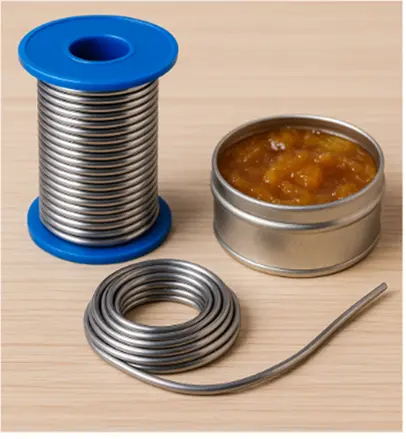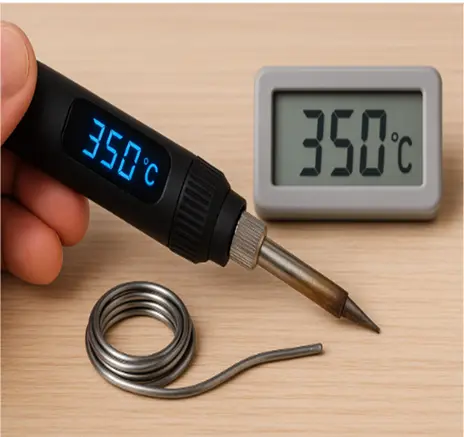In the electronics industry, soldering is one of the most crucial and widely used skills. Whether you're assembling circuit boards, repairing electronic components, or manufacturing consumer electronics, following proper soldering best practices ensures durability, reliability, and safety.
Poor solder joints can lead to connection failures, increased resistance, and even catastrophic device malfunctions. This article covers soldering best practices that every professional technician should follow for optimal performance.
1. Use High-Quality Solder and Flux
The quality of your materials greatly impacts your solder joints. Always use:
- Lead-free or leaded solder (depending on regulatory compliance)
- Rosin-core flux for electronics
- High-purity solder wire (e.g., 63/37 Sn/Pb alloy for certain jobs)
Tip: Poor-quality solder leads to brittle joints and corrosion over time.
2. Maintain the Correct Tip Temperature
Temperature control is essential. Common recommendations include:
Pro Tip: Invest in a temperature-controlled soldering station for consistent results
3. Keep Your Soldering Tip Clean
A clean tip ensures good heat transfer and minimizes contamination. Best practices include:
- Regularly wiping the tip on a damp sponge.
- Using brass wool to remove oxidation.
- Applying tip tinner when necessary.
4. Apply the Right Amount of Solder
Too much solder can cause shorts, while too little leads to weak joints.
Best Practice:
Feed solder just enough to form a concave fillet around the joint. Avoid blobs and cold joints.
5. Preheat the Joint Properly
Before adding solder, preheat both the component lead and the PCB pad for 1–2 seconds.
Why It Matters:
This helps solder flow evenly and bond properly, preventing dry or cold joints.
6. Use Proper Ventilation
Flux fumes can be harmful when inhaled over time.
Solutions:
- Install fume extractors near your workstation.
- Work in a well-ventilated area.
- Consider wearing a mask for additional safety.
7. Inspect Every Solder Joint
After soldering, inspect joints for:
- Smooth, shiny surface (for leaded solder)
- Proper wetting of the pad and lead
- No bridging between adjacent pads
Tools You Can Use:
- Magnifying glass
- Digital microscope
- X-ray inspection for multilayer boards
8. Master Different Soldering Techniques
Depending on the job, you might need:
- Through-hole soldering
- Surface mount soldering (SMT)
- Reflow soldering
- Wave soldering
Pro Tip: Learn rework and DE soldering techniques for error corrections.
9. Prioritize ESD Safety
Electrostatic discharge (ESD) can damage sensitive electronic components.
Best Practices for ESD Protection:
- Wear an ESD wrist strap.
- Use ESD-safe mats and tools.
- Ground your workstation.
10. Continuous Training and Certification
Stay updated with industry standards like:
- IPC-A-610 (Acceptability of Electronic Assemblies)
- J-STD-001 (Requirements for Soldered Electrical and Electronic Assemblies)
Consider:
Periodic refresher training to stay sharp and compliant.
Frequently Asked Questions (FAQs)
Q1: What type of solder is best for electronics?
A 60/40 or 63/37 tin-lead solder with rosin core is commonly used for its low melting point and excellent flow characteristics.
Q2: How do I prevent cold solder joints?
Ensure the components and pads are properly preheated and allow the solder to flow naturally without force.
Q3: Are lead-free solders better than leaded solders?
Lead-free solders are safer for the environment and comply with RoHS standards, but they require higher temperatures and are more challenging to work with.
Q4: What safety gear should I wear while soldering?
At minimum: safety goggles, ESD wrist strap, and gloves. If ventilation is poor, consider a respirator mask.
Q5: How often should I replace my soldering tip?
Replace the tip when it becomes pitted, oxidized beyond cleaning, or fails to transfer heat efficiently.
Q6: Why is flux important in soldering?
Flux cleans the surfaces, prevents oxidation during soldering, and improves solder flow for a strong bond.
Conclusion: Perfect You’re Craft with Consistent Soldering Best Practices
Whether you're a seasoned technician or just starting out in electronics manufacturing, following these soldering best practices ensures strong, durable, and professional results.
Invest in good tools, stay trained, and never compromise on safety or inspection standards.

